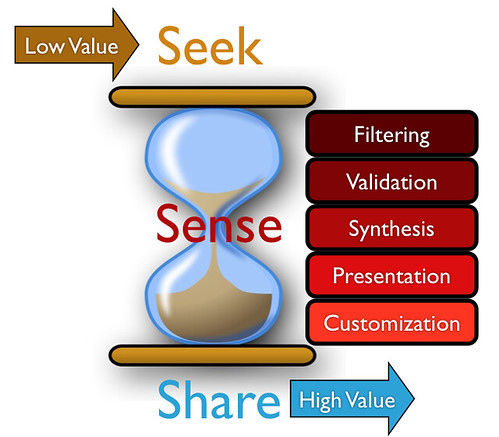[slideshare id=20268748&doc=curation13ntc-final-130430113112-phpapp02]
This year at the Nonprofit Technology Conference, I had the pleasure of designing and facilitating a session on “Content Curation for Nonprofits” with Will Coley. This blog post offers reflections and resources from the session.
I’ve been a content curator for many years, using the techniques to help me develop curriculum materials for workshops and blog posts – as a form of professional development. Will Coley, comes to the topic understanding how activists and activist organizations are using the techniques as part of their content and engagement strategies. Will is also does a lot of work with video – so when he proposed that we incorporate video interviews as part of the session, I was thrilled.
The session was designed to balance content delivery with peer interaction. The value of bringing in pre-recorded interviews with other folks to offer brief insights related to the particular topic made the session more engaging. While it is hard to measure actual attention spans, there is research that people pay closest attention during the first 10-18 minutes of lecture – and then their minds wander. So, varying speakers, interaction, and mediums – helps make the content stick.
One of the points we emphasized was that the art and craft of content curation was not mindless, click sharing of content. That the curator selects, describes, filters, organizes, and present resources. I did this in real-time as part of my presentation by highlight a e-book from Curata called “Feeding the Content Beast” with a foreword by Ann Handley, Chief Content Officer of MarketingProfs and the co-author of “Content Rules.”
I went through what specific pages to read and why, and had included a screen capture of the six practical tips because I thought it was the best set of tips to approach content curation and highly relevant to the audience of nonprofit professionals looking for time saving techniques. I mentioned that they had to fill out a form, but they could download the entire 20 page booklet. I also acknowledged Giuseppe Mauriello, another curator on Scoop.It from where I found this excellent resource.

Today, one of the foremost content curators Robin Good highlighted an updated version of Harold Jarche’s “Seek Sense Share” model applied to content curation. I first came across Harold’s Seek Sense Share model back in 2011 and I actually made my New Year’s resolution for professional learning. Later that year, I had begun to notice that I needed to pay more attention to training my attention and to be more intentional about how I was sharing information. The Seek-Sense-Share framework really helped me.
I connected Harold’s framework to content curation because it was useful for teaching the trade craft of content curation. I hope that participants took away from our session, if nothing else, that content curation requires the human brain, as Robin Good points out. And that if we haven’t reviewed and thought about a resource, we should not share it. This might be mean sharing less.
Content curation takes focus and discipline — being “brains on.”
For a terrific example of using Storify to curate content from a conference session, see what James Howe put together.
